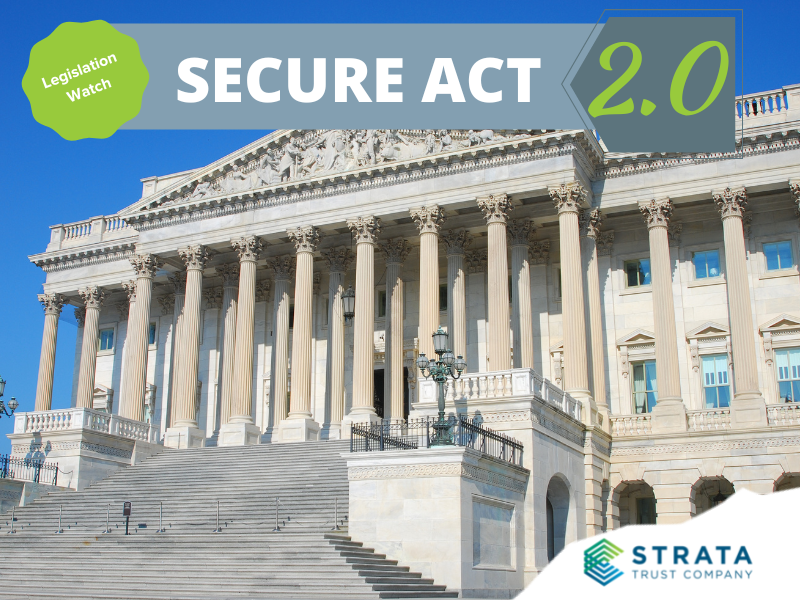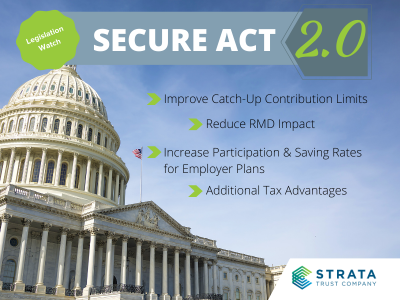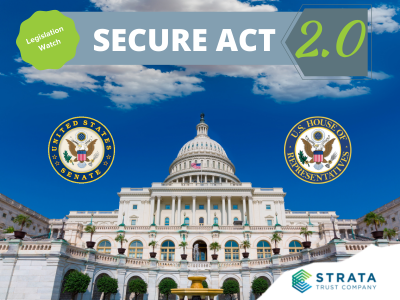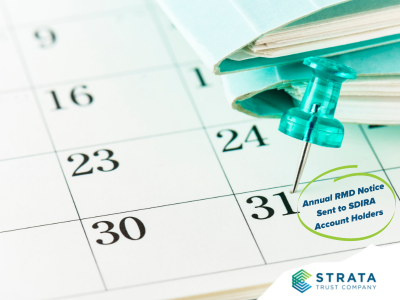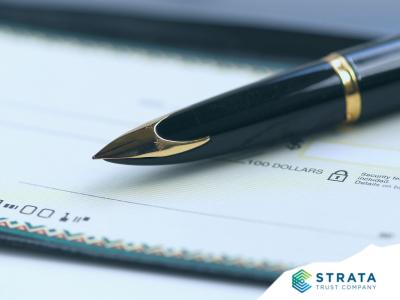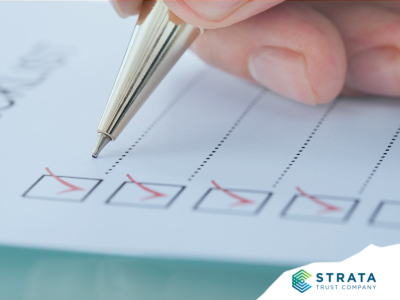“SECURE ACT 2.0” has been in the news for so long, some people may no longer believe in its potential to become law—legislators were talking “2.0” within months after the SECURE Act passed in December 2019. This comprehensive retirement savings reform proposal that builds on the changes passed into law with the SECURE Act of 2019 to help Americans save for retirement has undergone several starts and stops since early 2020, but it’s now reached a significant milestone.
The Path to Legislation
Federal laws typically follow a lengthy path, from being proposed, to consolidating competing proposals, to debating provisions, to garnering enough votes to pass into law. The SECURE Act 2.0 legislation has followed suit, so far. In May 2021, the House Ways and Means Committee passed a SECURE Act 2.0 bill (officially titled Securing a Strong Retirement Act of 2021) out of committee and presented it to the full House for a vote. This bill (and retirement savings policy in general) has strong bipartisan support. Many industry watchers predicted it would pass into law in 2021. But as often happens, other issues like the president’s infrastructure bill took priority in 2021.
In 2022, SECURE Act 2.0 was again brought up in the House, and on March 29, the Securing a Strong Retirement Act of 2022 passed this chamber almost unanimously (414-5). The bill was then handed off to the Senate for debate and vote.
House Version Of Secure Act 2.0
Based on the SECURE Act 2.0 that passed the House in March 2022, the changes affecting IRAs would include:
- Contributions & Withdrawals
- Index the Traditional and Roth IRA catch-up contribution limit
- Increase the SIMPLE IRA catch-up contribution limit to $5,000 for participants ages 62–64
- Treat student loan payments as deferrals for purposes of SIMPLE IRA matching contributions
- Limit the time to repay a qualified childbirth or adoption distribution to 3 years
- Custodial Responsibility
- Expand the IRS Employee Plans Compliance Resolution System (EPCRS) to allow custodians to address inadvertent failures in IRAs
- Expand the IRS Employee Plans Compliance Resolution System (EPCRS) to allow custodians to address inadvertent failures in IRAs
- Expanded Coverage Opportunities for Individuals/Employees
- Require new 401(k) plans to automatically enroll eligible employees
- Ensure long-term, part-time employees are eligible to participate in a retirement plan after 2 years
- Allow plan participants to designate employer matching contributions as Roth contributions
- Require 401(k) plan catch-up contributions to be made as Roth contributions
- Promote and enhance the Saver’s tax credit
- Incentive for Employers
- Simplify EPCRS procedures and allow employers to self-correct more errors
- Allow employers to provide small financial incentives to encourage employees to participate in a 401(k) plan
- For the first plan year, allow sole proprietors up until their tax-filing due date to make elective deferrals
- Increase the small business plan tax credit to 100% of start-up costs (up to $5,000)
- Create a new small business tax credit for a percentage of plan contributions made for the first 4 years, up to a per-employee cap of $1,000
- Prohibited Transactions
- Limit the deemed distributed amount to the amount involved in a prohibited transaction
- Modify family stock attribution rules
- Recharacterizations
- Allow SEP and SIMPLE IRAs to be designated as Roth IRAs
- Allow SEP and SIMPLE IRAs to be designated as Roth IRAs
- Required Minimum Distributions (RMD)
- Increase the RMD starting age to 75 by 2033
- Reduce the excise tax for missed RMDs to 25%, and to 10% if the IRA’s RMD failure is corrected in a timely manner
2022 Senate Expectations
Since making its way to the Senate, they have been crafting their own version of SECURE Act 2.0. While a final draft has not been released, it will likely be based on the Retirement Security and Savings Act of 2021. That bill contained many of the same provisions as the House SECURE Act 2.0, with a few differences in details and some additional provisions. The Senate Finance Committee and Health, Education, Labor, and Pensions Committee are expected to complete the Senate’s 2022 version of SECURE Act 2.0 early this summer. At that point, we’ll know exactly what differences remain and which details will need to be reconciled between the two versions of the bill, the two political parties, and the two chambers of Congress. While these are large, comprehensive proposals, the differences are expected to be relatively few, which should help expedite the reconciliation process.
No one can say for certain whether SECURE Act 2.0 will pass before mid-term elections or be put on the backburner until after November, but most agree that it is on track to be passed in 2022 (perhaps in the 11th hour, right before Christmas, like its predecessor in 2019).
SECURE Act 2.0 Legislation Path |
|
| December 19, 2019 | Senate passes (71-23) Setting Every Community Up for Retirement Enhancement (SECURE) Act. |
| February 25, 2020 | House Ways & Means committee announce plans to move on SECURE Act 2.0 legislation. |
| May 5, 2021 | House Ways and Means Committee pass SECURE Act 2.0. Legislation is set to move to Senate. |
| October 29, 2021 | SECURE Act 2.0 is put on the sideline with the Build Back Better framework announced that introduces harmful provisions for IRA owners. |
| September 21, 2021 | STRATA Trust, RITA, ADISA, and other industry colleagues form a joint effort to push back on harmful provisions for IRA owners. |
| November 19, 2021 | A revised Build Back Better Act passed the house (220-213) but stalled in the Senate. The harmful provisions for IRA owners were removed in the revised edition of the bill before passing the house. |
| March 25, 2022 | House passes Securing a Strong Retirement Act of 2022 –SECURE Act 2.0 (414-5). |
| ? 2022 | Legislation anticipated for SECURE Act 2.0 to be released by the Senate mid-summer (similar to the House version) and pass before 2023. |
STRATA Trust will keep an eye on the legislative path of SECURE Act 2.0 and alert readers to significant changes regarding legislation impacting retirement savings, IRAs, and alternative investments. As our elected officials are working through the matter, it is important that your opinion counts and they know how important leveraging IRAs in the alternative investment market is to your financial future. Find your rep and connect with them today!
- To find your U.S. Congressional Representative, go to: https://www.house.gov/representatives/find-your-representative
- To find your U.S. Senators, go to: https://www.senate.gov/senators/senators-contact.htm
